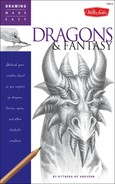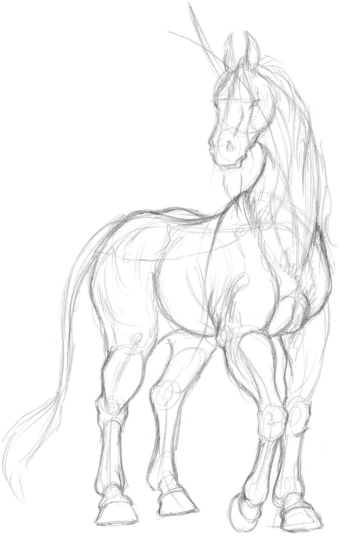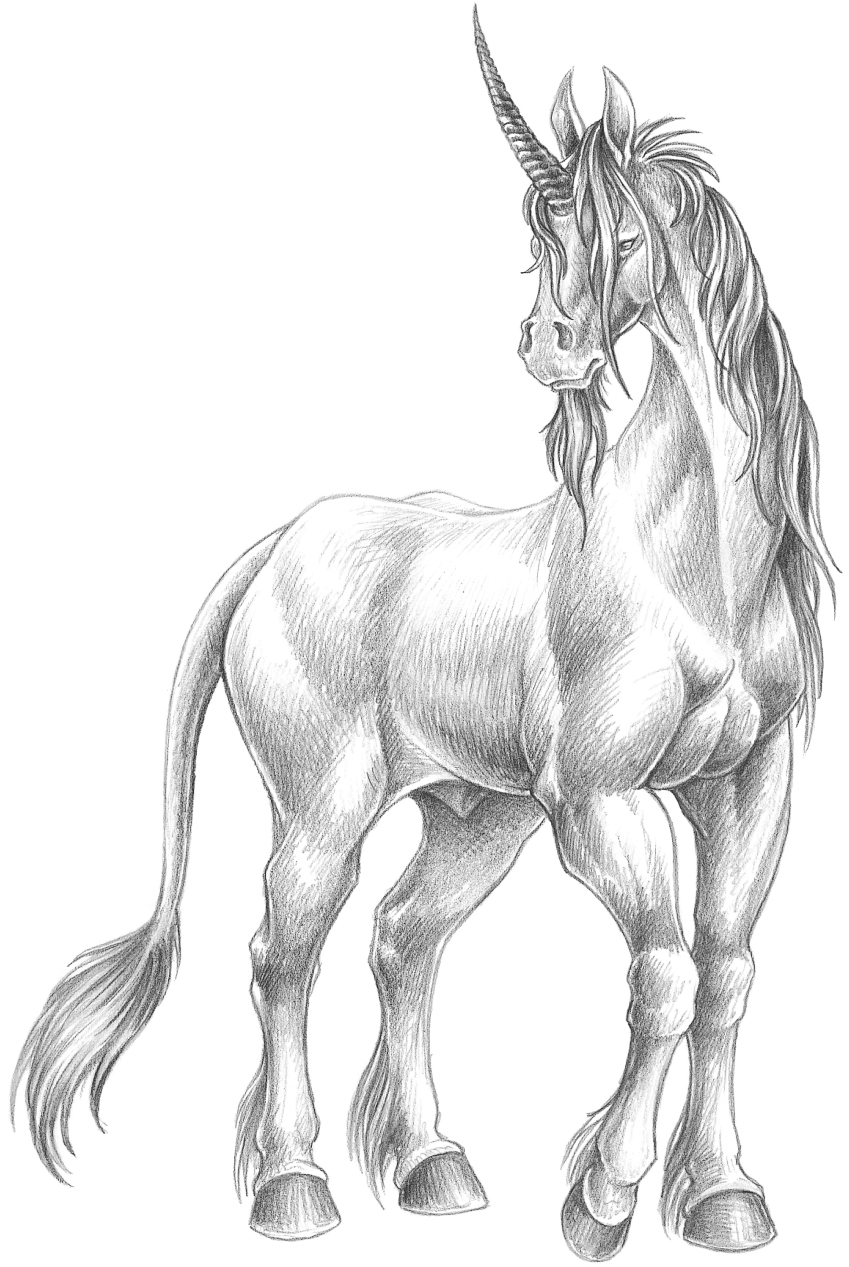If dragons are an archetypal fantasy creature from one end of the spectrum, unicorns are their counterpart, being equally recognized and popular throughout history, literature, and now film and television. It is quite possible that no two fantasy creatures are as instantly recognizable.

Horns The primary feature that sets unicorns apart from mundane horses is their single horn, properly called an “alicorn.” It is commonly whorled or spiraled, but don’t let that hamper your creativity. The world is full of horned creatures of various forms, some with very spectacular (or at least detailed and interesting) horns. Study what exists, and let those images inspire you when it’s time to create something fantastic.

Step 1 I start by drawing the line of action with an HB pencil; then I block in the lines of the figure. Although the pose is fairly static and stately, I add some motion to the composition by drawing the head so the unicorn is looking back over its shoulder.

Step 2 When I’m satisfied with the pose, I start to round out the figure with basic shapes. You’ve probably noticed that I haven’t added the alicorn yet; I’m saving my favorite part for the next step!
Step 3 Still sketching with the HB pencil, I start fleshing out more of the details: I define the muscles, add the mane and tuft of hair at the end of the tail, and draw the goatlike beard on the chin. I also add the ears, eyes, nose, mouth, and alicorn. Because the nightmare seemed so otherworldly, I choose to make the unicorn a little more “earthy” by drawing solid (not split) hooves and a slightly curved alicorn.
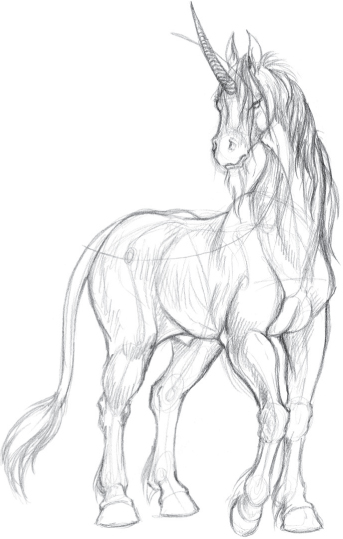
Step 4 Now I concentrate on the hair: I indicate the way the mane falls in layers, add hair to the fetlocks, and create the long forelock that falls to either side of the alicorn. I also detail the alicorn, making it ridged rather than smooth or spiraled. Next I lay down hatching that follows the contours of the muscles, especially around the neck.
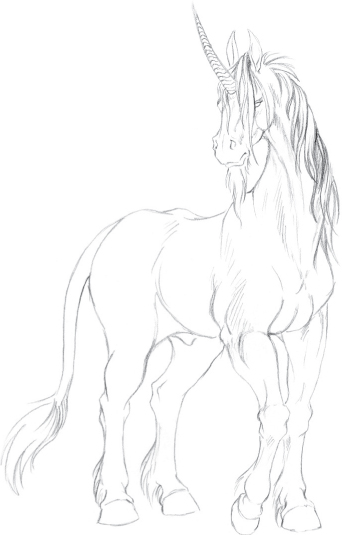
Step 5 This composition is very simple, but I’m pleased with how it’s going. I use the light table to help transfer most of my lines—along with some of the hatching to keep track of the contours of the muscles—to a clean sheet of paper.
Step 6 Now I use the HB pencil and hatching to indicate the general shading across the unicorn. For the long hair, I use strokes that run parallel to the direction of the hair growth; this makes the hair look smooth and silky.
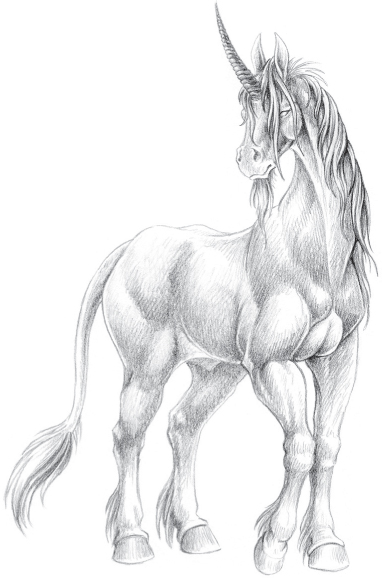
Step 7 I want to keep the image fairly light, implying a white or very light coat, so when I darken the shadows in this step I continue using the HB pencil instead of switching to a softer 2B. I slowly build up the shading with layers of hatching, gently blending with short, smooth strokes. I keep the shading on the alicorn and hooves smooth and subtle. To make the hooves look polished, I use a combination of vertical strokes and strokes that follow the shape of the hoof.
Step 8 Now I bring in a soft 2B pencil to darken some of the deepest shadows, especially the alicorn, hooves, and darkest strands of hair. Overall, the effect is very subtle, making the figure seem aloof and distant, true to the mythology surrounding this species.
